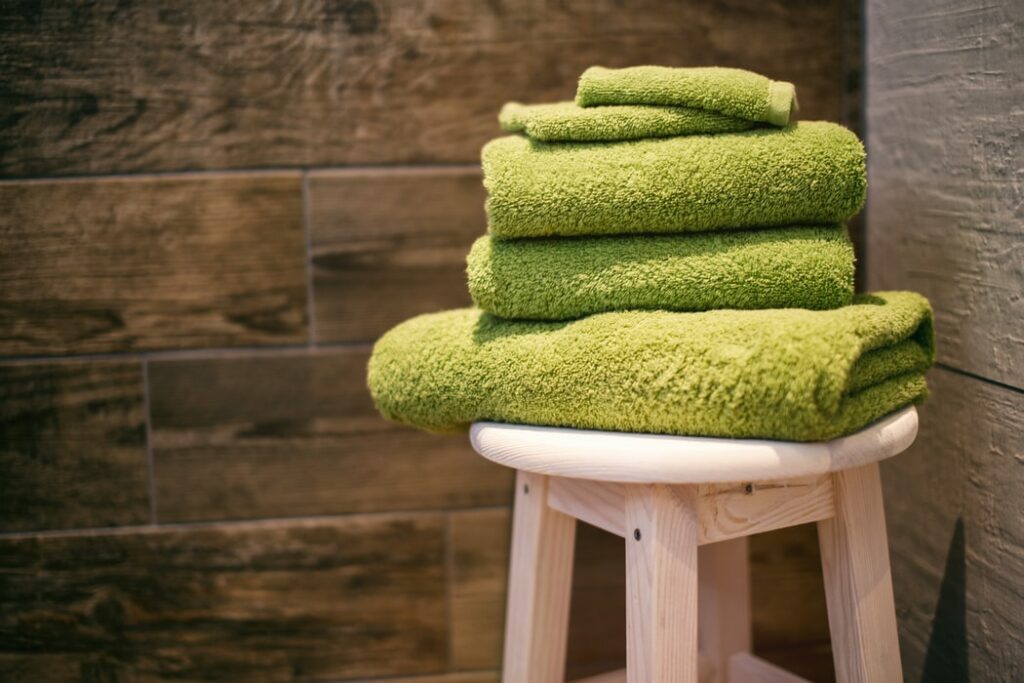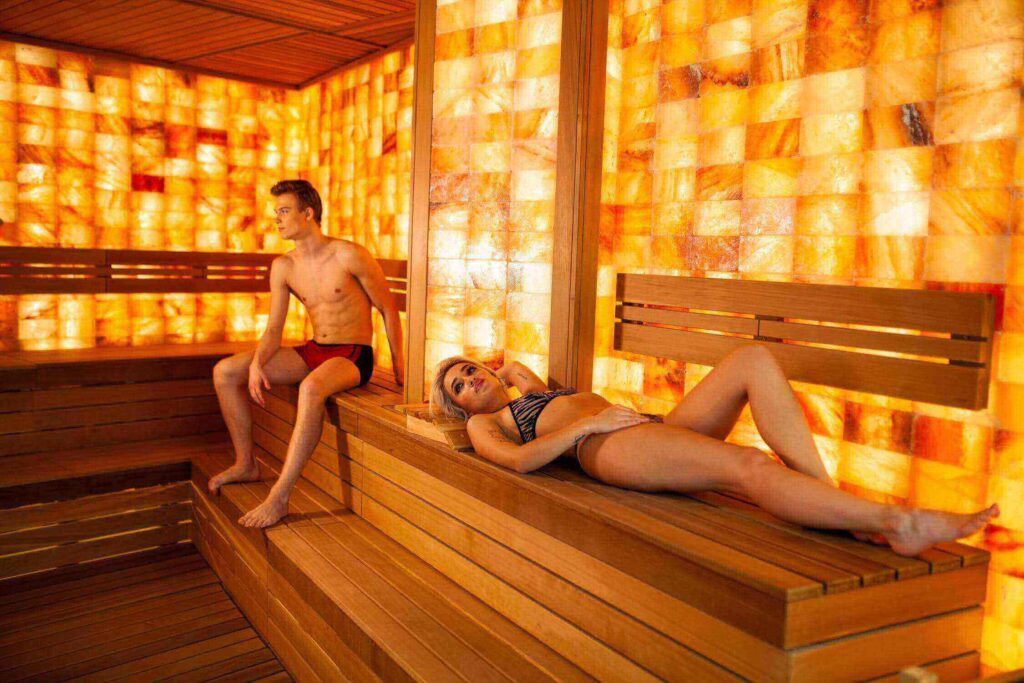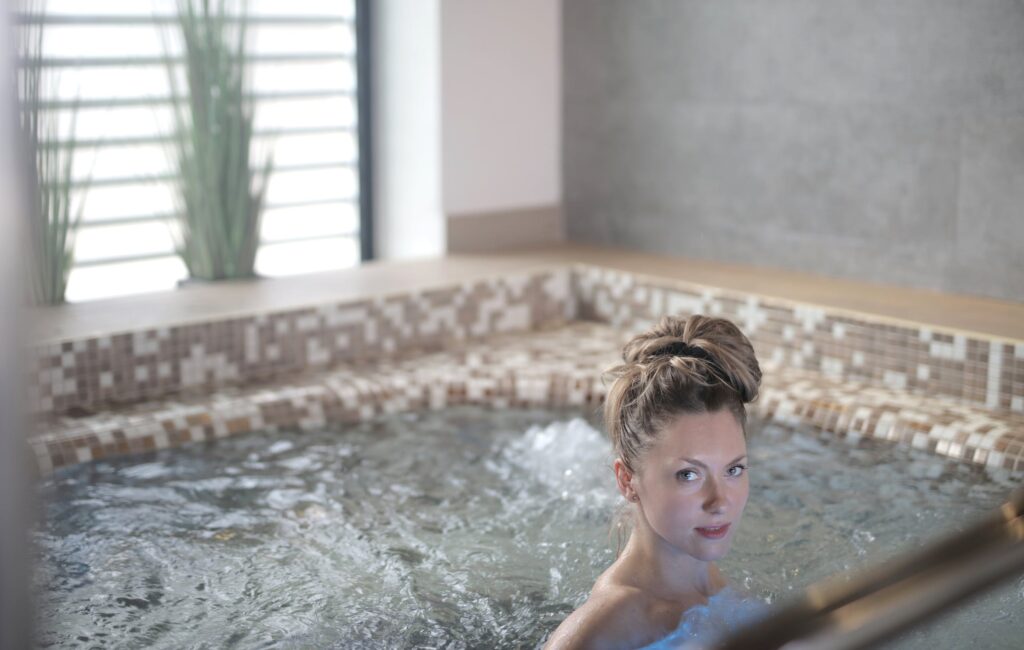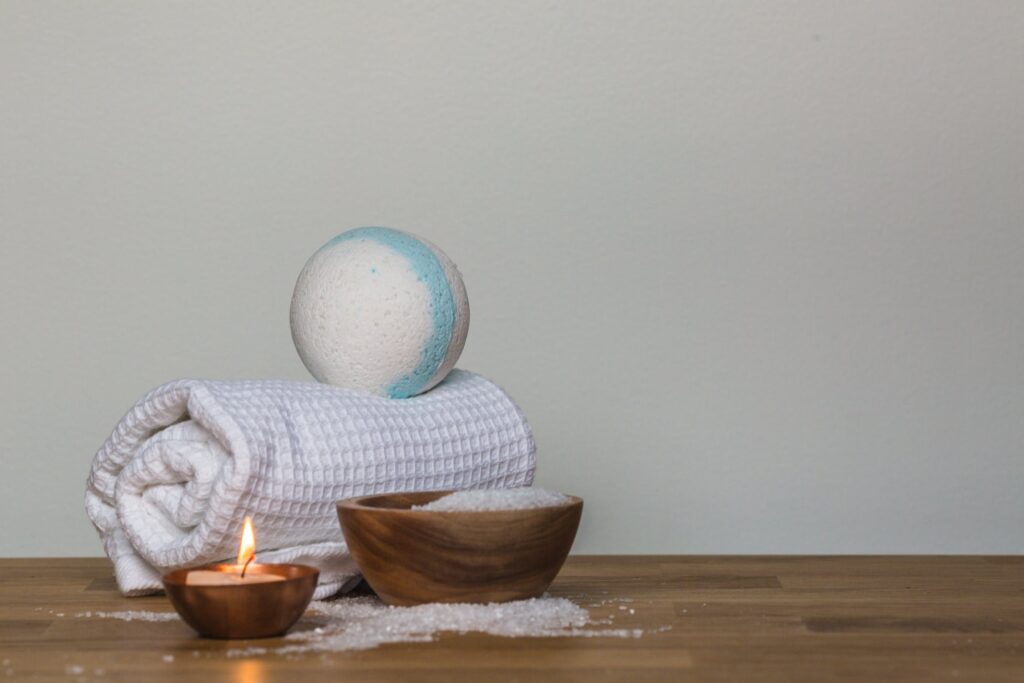Are you prepared for the pinnacle of leisure? Envision yourself entering a relaxing portable sauna, where the heat instantly soothes your muscles and melts away the day's stress. But have you ever pondered the processes involved in creating such peaceful havens? The engineering behind these portable saunas will become clear when we explore the components employed in their construction.
High-quality, long-lasting materials are often used to construct portable saunas to guarantee their effectiveness and safety. Cedarwood, naturally moisture-resistant, is used for the sauna's exterior because it is beautiful and long-lasting. To keep the heat in and improve the sauna experience, the interior walls are wrapped with insulating materials like foil bubble wrap. Infrared lights and electric stoves are just two examples of how the heating elements are expertly combined to create that comforting glow.
However, these are only some of the qualities that set portable saunas apart from the rest. In this piece, we'll go into the specifics of these materials, discussing their characteristics and how they enrich the sauna experience as a whole. If you're interested in learning more about these private retreats or purchasing one, come along as we explore the finer points of making portable saunas.
Get ready to reveal the expertise of top manufacturers and learn from the insights of well-known professionals in the field. We'll cover everything about portable saunas, from the ideal combination of materials to the expert insights that optimise the sauna's performance. In that case, let's save time and enter the fascinating universe of materials that make up the perfect place to unwind.
Benefits Of Using A Portable Sauna
Because of their portability and ease of use, portable saunas have become increasingly popular. These little and flexible gadgets have many uses and benefits, including offering a pleasant and revitalising experience for the user's mind and body. Let's examine why so many health buffs and people just try to unwind love using portable saunas.
Easily Reachable and Convenient
The portability and ease of use of portable saunas is a major benefit. Portable saunas can be used practically anywhere, unlike traditional saunas, which need a designated location within a home or a gym. Their modest size makes them convenient for usage in confined areas such as homes, workplaces, and even the outdoors. They are portable and lightweight so users can take their sauna experience anywhere.
Setting up a portable sauna is quick and easy. Most types may be set up in minutes without professional help with plumbing or wiring. This portability and ease of use allow people to get the sauna's health benefits without committing to a permanent setup.
Positive Effects on Physical and Mental Health
Traditional and portable saunas have been shown to affect health positively. Consistent sauna time has been shown to benefit mood and health. Saunas are great for relieving stress, so many people enjoy using them. Muscle tension is reduced, and stress is alleviated due to the dry heat. Better sleep is essential for good health and cognitive performance; relaxation can help.
Saunas are well known for their capacity to make people sweat, a process that helps the body eliminate toxins. Sweating is beneficial because it rids the body of harmful toxins and leaves the skin and the immune system looking better. Heart health may also benefit from the enhanced circulation caused by the heat.
Clearer thinking and a better disposition have also been related to sauna use. Endorphins are chemicals in the body that are released during sauna use, and they can make you feel good and lessen your worry and despair.
Cost-Effectiveness vs. Traditional Saunas
Traditional saunas can be costly because of their complex set-up, necessitating a separate room and special wiring. Portable saunas are a great way to get the health advantages of a sauna without breaking the bank.
A portable sauna has a lower initial investment than a permanent sauna. Additionally, long-term electricity costs can be reduced by using a portable sauna due to its efficiency and low power requirements. Unlike a permanent sauna, which would have to be left behind if you moved, a portable sauna may be taken wherever you go.
Understanding Sauna Core Components
The health benefits of saunas have made them popular among spa-goers for decades. These tranquil havens are great for relieving tension, aches, and pains, and they also help with detoxification. Saunas have a reputation for being a haven of relaxation, but the technology behind them is simple. This article will examine the sauna's foundation, explaining the building blocks of this cherished thermal haven.
Components of a Sauna's Framework and Structure
The strength and beauty of the sauna are based on its sturdy frame and well-designed structure. Saunas can be built using various materials, each with its own quirks and benefits.
Aluminium: Lightweight And Durable
Aluminium is a great material for individuals looking for a sleek, modern look. Because of how light it is, setting it up is a breeze. In addition, the longevity of aluminium guarantees that the sauna will last, even with frequent use.
Wood: Traditional And Popular Choice
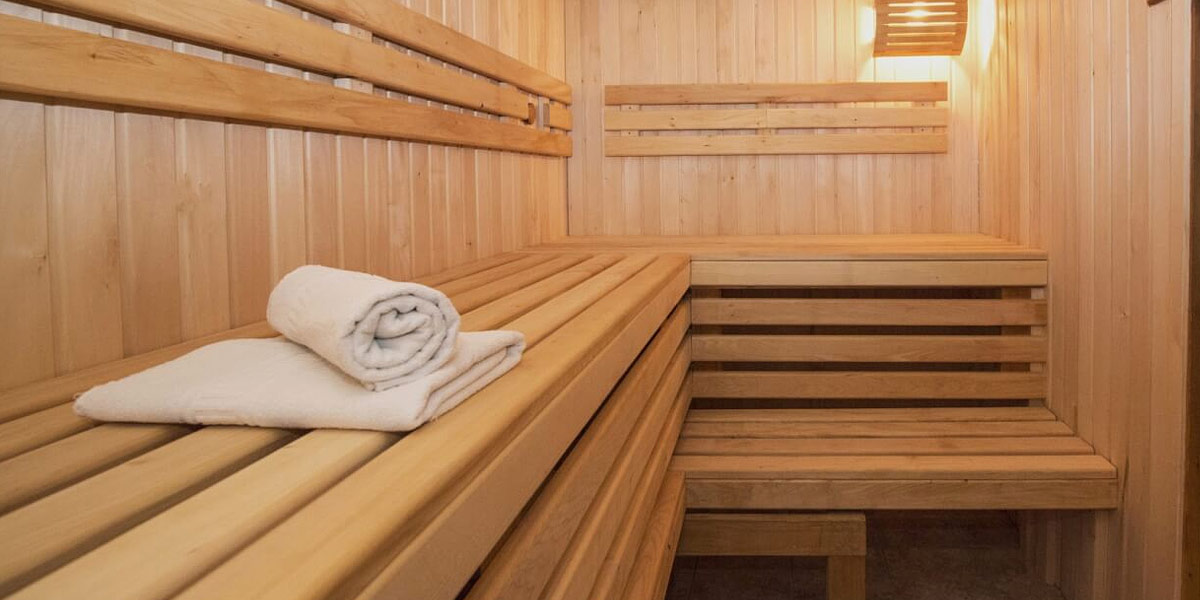
Building a sauna out of wood is a time-honoured tradition. The beauty of nature and its fragrance make for a cosy and welcoming environment. Cedar and spruce are two of the most popular choices for saunas because of their durability, heat retention, and nice aroma. Because of its insulating qualities, wood also makes the sauna experience more economical.
Carbon Fiber: High-Tech And Efficient
Thanks to technological advancements, carbon fibre is a cutting-edge material that is finding its way into the sauna industry. Carbon fibre, known for its high strength-to-weight ratio and efficient heating, maintains a consistent temperature throughout the sauna. This material improves the sauna's functionality and lends an air of contemporary style to the space.
Sauna Heating Elements
The heating components are the beating heart of any sauna, producing the soothing heat that makes it enjoyable to spend time in. In the majority of saunas, one of two types of heating components is used.
Ceramic Heaters: Even Heat Distribution
The usage of ceramic heaters is also common in saunas. These components perform exceptionally well at keeping a steady, even temperature across the sauna room. Ceramic heaters provide a more authentic sauna experience by warming the air around you rather than the object itself.
Infrared Heaters: Low-Energy And Efficient Consumption
Infrared heaters have become increasingly popular due to their effectiveness and low energy consumption. They work by heating the things and people in the sauna instead of the air around them. This strategy guarantees that heat is delivered uniformly, making for a mild, comfortable space with less energy.
Insulation Materials
A sauna's insulation is crucial to its ability to keep in the heat it generates and to be both comfortable and energy efficient. Insulate your sauna using one of these two typical materials:
Reflective Foil: Trapping Heat Inside
The reflective foil effectively functions as a barrier to keep the sauna's heat in. It keeps the sauna nice and toasty longer since the heat is reflected into the room rather than escaping into the air.
Mineral Wool: Excellent Heat Retention
The mineral wool's ability to retain heat is well-known. This insulation material guarantees a consistently pleasurable sauna experience by preventing heat from escaping.
Choosing The Right Portable Sauna: What To Look For
Different sauna heaters provide a unique sauna experience, albeit serving the identical function of heating the room. For instance, an electric sauna heater can provide the same heat level as a wood-burning sauna heater without releasing any distinctive smoky aroma.
In contrast, an electric heater makes it easy to turn your sauna on and off and maintain a precise temperature with little to no work. Wood-burning sauna heaters are more traditional, but electric ones are more practical. Choosing the right sauna heater requires careful consideration of several different aspects.
Sauna Heater Buying Checklist
When selecting a sauna heater, what factors should you take into account? Here's a quick rundown of the key points:
- Sauna Location
- Is My Sauna Electric? Is Firewood Readily Available?
- Are There Sauna Location Restrictions?

Sauna Location
The location of your sauna, indoors or out, will affect the type of sauna heater you employ. Due to flue design and installation restrictions, an electric sauna heater is typically the best option for an indoor sauna.
You may set up your sauna anywhere outdoors; ensure it's designed to withstand the elements. You can use electric heating if the sauna is close to a power outlet.
Is My Sauna Electric? Is Firewood Readily Available?
If you want a sauna's health benefits but live in the city, an electric sauna heater may be your best bet. Wood, which might be difficult to come by in cities, is unnecessary. In places without reliable access to electricity, wood-fired heating is your only viable choice.
Are There Sauna Location Restrictions?
This is especially true for saunas that use wood for heat: Find out what rules your community has established for burning wood. If you need help installing and using these heaters, follow safety and environmental regulations:
- Contact the company that sold them.
- Ensure you comply with all wood-burning laws imposed by your municipality.
- If your sauna heater is electric, have a licenced electrician check its wiring to ensure it's installed properly and safely.
Additional Buying Tips
When shopping for a sauna heater, you should also keep in mind the following details:
- Shipping and Delivery: When shopping for sauna heaters, delivery options should also be considered. Shipping a large appliance can be tricky and expensive, so looking for local stores is best if you're in the market for one. You can save on shipping costs and get free pickup by choosing this option.
- Installation Services: Need a sauna but more time to set up your heater? Check if the sauna company you're considering also offers setup services. There may be an added fee, but this service can make constructing your sauna much easier and faster.
Sauna Maintenance Guide
It is of utmost importance in public spaces to keep all equipment and facilities in good working order and secure. A torque wrench with an accurate 7.5Nm rating and a 2.5mm Allen key are necessary for performing checks and tightening door hinges. By using these instruments with care, we can ensure the doors' structural soundness and keep everyone inside safe.
To ensure the charging station door opens and closes smoothly, a Phillips head screwdriver should also be available for installation. As a result, the user experience improves, and any possible problems that could cause disruption or downtime are avoided.
As a responsible business, you should also make the safety and comfort of your clients a top priority by posting prominent warning signs. By doing so, you can make people more aware of the risks involved and guarantee that they will use the facilities safely.
A clean, dry environment is especially important in high-use areas like the backs of bench seats, backrests, and the floor. As a bonus, this also helps keep things clean and pleasant for everyone that comes through. Maintaining a regular cleaning and inspection schedule can do wonders for your clients' health and happiness.
The efficiency of your WiFi network is just as crucial. In today's always-online world, guests who need to work, chat, or just browse the web really must have access to dependable WiFi. Making sure your WiFi is working properly on a regular basis can keep things running smoothly and reduce the likelihood of any hiccups.
FAQs About Sauna
Yes, besides wood and fabric, portable saunas may also include other materials to enhance the overall experience. For instance, they might have stainless steel components like hinges and latches for added durability and stability. Additionally, some saunas may have insulating layers or foil wraps to improve heat retention and efficiency.
In some cases, yes. Many manufacturers offer options for customization, allowing you to choose specific types of wood or fabric according to your preferences and needs. However, keep in mind that customizations may affect the price and lead time for the sauna's delivery.
Yes, cedar is one of the most popular choices for portable saunas. Cedar wood has natural properties that make it highly resistant to decay and insects. Moreover, cedar contains natural oils and a pleasant aroma, which enhances the sauna experience while also providing antimicrobial benefits. However, other woods like hemlock and pine are also used, depending on availability and budget.
The fabric used in portable saunas is typically a durable and heat-resistant material, such as nylon or polyester. This fabric is designed to withstand high temperatures without deteriorating or emitting harmful fumes. It serves as the outer layer that contains the heat generated inside the sauna while also providing insulation. Additionally, the fabric is lightweight and easy to fold, making the sauna portable and convenient to transport.
Yes, safety is crucial when it comes to portable saunas. It is essential to ensure that the materials used are non-toxic and emit no harmful chemicals, especially when subjected to high temperatures. The wood should be free from any chemical treatments or coatings that could release fumes when heated. The fabric should also be heat-resistant to avoid any fire hazards. When purchasing a portable sauna, it's essential to verify that the materials used comply with safety standards and regulations.
Conclusion
Portable saunas are a popular and versatile relaxation option that offer numerous benefits to both the user and the environment. They are built using high-quality materials, such as Cedarwood, which is naturally moisture-resistant, and insulating materials like foil bubble wrap. Infrared lights and electric stoves are also used to create a comforting glow.
Portable saunas are easily reachable and convenient, making them suitable for use in various locations, such as homes, workplaces, and outdoor spaces. They are lightweight and easy to set up, allowing users to enjoy the sauna's health benefits without committing to a permanent setup.
Saunas have been shown to have positive effects on physical and mental health, such as reducing muscle tension, stress, better sleep, and improved mental health. They also help the body sweat, which helps eliminate toxins and improve circulation. Sauna use also leads to clearer thinking and a better disposition, as endorphins released during sauna use can reduce worry and despair.
Portable saunas are cost-effective compared to traditional saunas, as they require less initial investment and long-term electricity costs. They can be taken wherever the user goes, making them a convenient and cost-effective alternative to traditional saunas.
The sauna's core components include aluminum, wood, and carbon fiber. Aluminum is lightweight and durable, making it easy to set up and maintain. Wood is a traditional and popular choice due to its durability, heat retention, and pleasant aroma. Carbon fiber, a high-tech and efficient material, maintains a consistent temperature throughout the sauna, improving functionality and adding a contemporary touch to the space.
Sauna heating elements are essential for creating a comfortable and enjoyable experience. There are two main types of heating components: ceramic heaters for even heat distribution and infrared heaters for low-energy and efficient consumption. Insulation materials are crucial for keeping heat in and maintaining a comfortable temperature. Reflective foil traps heat inside and mineral wool is known for its heat retention.
Choosing the right portable sauna heater requires careful consideration of factors such as sauna location, electric heater availability, and location restrictions. Electric heaters are typically the best option for indoor saunas due to flue design and installation restrictions. For outdoor saunas, electric heaters are typically the best option due to their ability to withstand elements.
Sauna location restrictions include following local rules for burning wood and complying with wood-burning laws. If a sauna heater is electric, a licensed electrician should check its wiring to ensure proper installation.
When shopping for a sauna heater, consider shipping and delivery options, as well as installation services. Local stores can save on shipping costs and provide free pickup. Additionally, check if the sauna company offers setup services for easier and faster installation.
Maintenance is crucial in public spaces, with a torque wrench, a Phillips head screwdriver, and warning signs to ensure safety and comfort. A clean, dry environment is especially important in high-use areas, and dependable WiFi network efficiency is crucial for smooth operations and reduced hiccups.
Content Summary:
- The engineering behind these portable saunas will become clear when we explore the components employed in their construction.
- High-quality, long-lasting materials are often used to construct portable saunas to guarantee their effectiveness and safety.
- To keep the heat in and improve the sauna experience, the interior walls are wrapped with insulating materials like foil bubble wrap.
- Infrared lights and electric stoves are just two examples of how the heating elements are expertly combined to create that comforting glow.
- However, these are only some of the qualities that set portable saunas apart from the rest.
- In this piece, we'll go into the specifics of these materials, discussing their characteristics and how they enrich the sauna experience as a whole.
- If you're interested in learning more about these private retreats or purchasing one, come along as we explore the finer points of making portable saunas.
- Get ready to reveal the expertise of top manufacturers and learn from the insights of well-known professionals in the field.
- We'll cover everything about portable saunas, from the ideal combination of materials to the expert insights that optimise the sauna's performance.
- Because of their portability and ease of use, portable saunas have become increasingly popular.
- These little and flexible gadgets have many uses and benefits, including offering a pleasant and revitalising experience for the user's mind and body.
- Let's examine why so many health buffs and people just try to unwind love using portable saunas.
- The portability and ease of use of portable saunas is a major benefit.
- Setting up a portable sauna is quick and easy.
- This portability and ease of use allow people to get the sauna's health benefits without committing to a permanent setup.
- Portable saunas are a great way to get the health advantages of a sauna without breaking the bank.
- A portable sauna has a lower initial investment than a permanent sauna.
- Additionally, long-term electricity costs can be reduced by using a portable sauna due to its efficiency and low power requirements.
- Saunas have a reputation for being a haven of relaxation, but the technology behind them is simple.
- This article will examine the sauna's foundation, explaining the building blocks of this cherished thermal haven.
- The strength and beauty of the sauna are based on its sturdy frame and well-designed structure.
- In the majority of saunas, one of two types of heating components is used.
- Insulate your sauna using one of these two typical materials. The reflective foil effectively functions as a barrier to keep the sauna's heat in.
- Choosing the right sauna heater requires careful consideration of several different aspects.
- When selecting a sauna heater, what factors should you take into account?
- The location of your sauna, indoors or out, will affect the type of sauna heater you employ.
- Due to flue design and installation restrictions, an electric sauna heater is typically the best option for an indoor sauna.
- You can use electric heating if the sauna is close to a power outlet.
- If you want a sauna's health benefits but live in the city, an electric sauna heater may be your best bet.
- If your sauna heater is electric, have a licenced electrician check its wiring to ensure it's installed properly and safely.
- When shopping for a sauna heater, you should also keep in mind the following details:
- Shipping and Delivery: When shopping for sauna heaters, delivery options should also be considered.
- Installation Services: Need a sauna but more time to set up your heater?
- Check if the sauna company you're considering also offers setup services.
- It is of utmost importance in public spaces to keep all equipment and facilities in good working order and secure.
- Maintaining a regular cleaning and inspection schedule can do wonders for your clients' health and happiness.
- The efficiency of your WiFi network is just as crucial.
- Making sure your WiFi is working properly on a regular basis can keep things running smoothly and reduce the likelihood of any hiccups.


